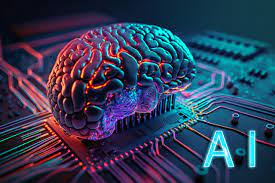In a world where artificial intelligence (AI) continues to revolutionize industries and redefine human-machine interactions, mastering the art of AI interaction has become a crucial skill for individuals and businesses alike. From virtual assistants and chatbots to complex algorithms powering autonomous vehicles, AI is omnipresent, shaping our daily lives in ways we may not even realize.
The ability to effectively prompt AI systems lies at the heart of maximizing their potential and harnessing their power to streamline tasks, solve problems, and enhance decision-making processes. Whether it’s seeking information, generating creative content, or automating routine tasks, understanding how to prompt AI like a pro can unlock a world of possibilities and efficiencies.
As we delve into the nuances of AI interaction and the art of crafting the perfect prompt, it becomes evident that the way we communicate with AI systems can significantly impact their performance and outcomes. By mastering the intricacies of AI prompting, individuals can not only optimize their interactions with intelligent machines but also stay ahead in an increasingly AI-driven world.
Join us on a journey to explore the depths of AI interaction,
learn valuable strategies for effective prompting,
discover how to navigate the evolving landscape of human-AI
communication with finesse and expertise.
Understanding AI:

Artificial Intelligence (AI) stands at the forefront of technological innovation, aiming to replicate human intelligence and perform tasks that traditionally necessitate human cognitive abilities. At its core, AI encompasses a diverse set of algorithms and technologies designed to enable machines to learn from data, adapt to new inputs, and execute tasks with a level of autonomy.
Unlike traditional computer programs that follow predefined instructions, AI systems have the capacity to analyze patterns, make decisions, and improve their performance over time through a process known as machine learning. By leveraging vast amounts of data and sophisticated algorithms, AI models can recognize complex patterns, infer insights, and make predictions with remarkable accuracy.
One of the fundamental goals of AI is to emulate human intelligence by exhibiting traits such as reasoning, problem-solving, perception, and natural language understanding. Through techniques like neural networks, deep learning, and reinforcement learning, AI systems can simulate human-like behaviors and cognitive processes, enabling them to excel in tasks ranging from image recognition and language translation to strategic decision-making.
In essence, AI serves as a powerful tool for augmenting human capabilities, automating repetitive tasks, and driving innovation across various domains. By understanding the principles behind AI and its mechanisms of operation, individuals can harness its potential to enhance productivity, efficiency, and problem-solving capabilities in a wide array of applications.

Types of AI:
Artificial Intelligence (AI) encompasses a spectrum of capabilities, from specialized systems to highly advanced forms of intelligence. Understanding the distinctions between Narrow AI, General AI, and Super AI is crucial for grasping the diverse applications of AI technology.
1. Narrow AI (Artificial Narrow Intelligence – ANI):

– Narrow AI, also known as Artificial Narrow Intelligence (ANI), is designed for specific tasks and operates within well-defined boundaries.
– Examples of Narrow AI include virtual assistants, recommendation algorithms, and image recognition software.
– Narrow AI excels in applications such as natural language processing, data analysis, and personalized content delivery.
2. General AI (Artificial General Intelligence – AGI):

– General AI, or Artificial General Intelligence (AGI), aims to replicate human-like cognitive abilities across a broad range of tasks and contexts.
– AGI systems possess the capacity for reasoning, learning, problem-solving, and adapting to diverse scenarios.
– While AGI remains a theoretical concept, its potential applications span from autonomous decision-making to creative problem-solving in various domains.
3.Super AI (Artificial Superintelligence):

– Super AI, or Artificial Superintelligence, represents a hypothetical form of intelligence that surpasses human cognitive capabilities in all domains.
– Superintelligent systems would exhibit unparalleled problem-solving skills, creativity, and adaptability.
– The implications of Super AI range from revolutionary advancements in technology to profound societal impacts.
Applications:
Narrow AI Applications:
– In healthcare, Narrow AI is used for medical imaging analysis, personalized treatment recommendations, and administrative tasks.
– In finance, Narrow AI powers fraud detection systems, algorithmic trading platforms, and customer service chatbots.
– In marketing, Narrow AI drives targeted advertising campaigns, customer segmentation strategies, and sentiment analysis on social media.
General AI and Super AI Potential:
– General AI and Super AI hold the promise of transforming industries such as autonomous vehicles, scientific research, and personalized healthcare.
– The development of AGI and Super AI could lead to breakthroughs in areas like natural language understanding, creativity, and adaptive problem-solving.
Understanding the capabilities and potential applications of different types of AI, enables individuals harness the power of artificial intelligence to drive innovation and address complex challenges across diverse fields.

Prompting an AI:
Prompting an AI effectively is essential for achieving accurate and desired outcomes in your interactions with artificial intelligence systems. Here are some valuable tips to enhance your AI prompting skills:
1. Be Clear and Concise:
– Clearly articulate your request or query in a straightforward manner.
– Avoid ambiguity and provide specific details to help the AI understand your intent accurately.
2. Provide Relevant Context:
– Offer context or background information to help the AI comprehend the task or question more effectively.
– Include relevant details that can assist the AI in providing a tailored response or solution.
3. Use the Appropriate Language:
– Tailor your language to match the capabilities and requirements of the AI system you are interacting with.
– Avoid jargon or complex terminology that may confuse the AI and lead to inaccurate results.
4. Ask Specific Questions:
– Frame your prompts as specific questions or commands to guide the AI in generating precise responses.
– Break down complex tasks into smaller, manageable steps to facilitate better communication with the AI.
5. Provide Feedback:
– Offer feedback on the AI’s responses to help refine its understanding and improve future interactions.
– Correct any errors or misunderstandings promptly to enhance the AI’s performance over time.
6. Experiment and Learn:
– Explore different ways of prompting the AI to discover what yields the best results.
– Continuously learn from your interactions with the AI to adapt and optimize your prompting strategies.
Incorporating these tips into your interactions with AI systems, can enhance the effectiveness of your prompts and leverage the full potential of artificial intelligence technology in various applications.
Examples of Prompting an AI:
Prompting an AI for various tasks requires thoughtful consideration and strategic communication. Here are examples of how to effectively prompt an AI for tasks such as asking for information, generating text, and solving problems:
1. Asking for Information:
Example Prompt: Hey AI, can you provide me with the latest weather forecast for New York City?”
Explanation: This prompt is clear and specific, indicating the desired information (weather forecast) and the location (New York City). By framing the request in a direct manner, the AI can quickly process the query and generate a relevant response.
2. Generating Text:
Example Prompt: AI, please compose a summary of the key findings from the research report.”
Explanation: In this prompt, the AI is instructed to generate text summarizing the key findings of a research report. By outlining the task clearly and concisely, the AI can use natural language processing techniques to extract and synthesize relevant information.
3. Solving Problems:
Example Prompt: AI, analyze the sales data from the past quarter and identify trends that can inform our marketing strategy.”
Explanation: This prompt directs the AI to analyze sales data, identify trends, and provide insights for enhancing the marketing strategy. By specifying the task and desired outcome, the AI can apply data analysis algorithms to derive actionable recommendations.
4. Interactive Dialogue:
Example Prompt: AI, can you recommend a book similar to ‘The Great Gatsby’?”
Explanation: This prompt initiates an interactive dialogue with the AI, requesting a personalized recommendation based on a reference book. By engaging in a conversational style and providing context, the AI can offer tailored suggestions based on user preferences.
Utilizing these examples as a guide, can help you refine your prompting skills and optimize your interactions with AI systems across a diverse range of tasks and applications.

Challenges in Prompting an AI:
While interacting with AI systems can be highly beneficial, several challenges may arise that impact the effectiveness of prompting. Addressing these challenges is key to optimizing AI interactions and maximizing the potential of artificial intelligence technology. Here are some common challenges to consider:
1. Ambiguity in Instructions:
Challenge: Ambiguous or vague instructions can lead to misunderstandings and inaccurate responses from the AI.
Impact: Ambiguity hinders the AI’s ability to interpret prompts correctly and may result in unsatisfactory outcomes.
Solution: Provide clear, concise, and specific instructions to minimize ambiguity and ensure the AI understands your intent accurately.
2. Limitations of Current AI Technology:
Challenge: Current AI technology has inherent limitations in areas such as understanding context, handling complex tasks, and adapting to new scenarios.
Impact: These limitations can restrict the AI’s capabilities and hinder its performance in certain tasks.
Solution: Acknowledge the boundaries of current AI technology and set realistic expectations when prompting AI for tasks within its scope of expertise.
3. Ethical Considerations:
Challenge: Ethical dilemmas may arise when prompting AI systems, especially in sensitive or morally ambiguous contexts.
Impact: Ethical considerations such as privacy, bias, and accountability can influence the ethical use of AI technology.
Solution: Prioritize ethical guidelines and principles when interacting with AI, ensuring transparency, fairness, and responsible decision-making in all interactions.
4. Data Quality and Bias:
Challenge: AI systems rely on data for training and decision-making, which can be biased or incomplete.
Impact: Biased data can lead to skewed results and reinforce existing biases in AI algorithms.
Solution: Ensure data quality by sourcing diverse and representative datasets, implementing bias mitigation techniques, and regularly auditing AI models for fairness.
5. User Experience and Adaptation:
Challenge: User experience plays a crucial role in effective AI prompting, requiring intuitive interfaces and seamless interactions.
Impact: Poor user experience can hinder engagement with AI systems and limit their utility.
Solution: Design user-friendly interfaces, provide clear guidance on interacting with AI, and prioritize user feedback for continuous improvement.
6. Complexity of Tasks:
Challenge: Complex tasks requiring nuanced understanding or multi-step processes can pose challenges for AI systems.
Impact: AI may struggle to handle intricate tasks or requests that involve multiple variables or dependencies.
Solution: Break down complex tasks into simpler sub-tasks, provide structured input, and guide the AI through step-by-step instructions to enhance task comprehension.
7. Lack of Feedback Mechanisms:
Challenge: Limited or inadequate feedback mechanisms can hinder the AI’s ability to learn and improve over time.
Impact: Without timely feedback, AI systems may not correct errors, refine their responses, or adapt to user preferences effectively.
Solution: Establish robust feedback loops to provide input on the AI’s performance, correct inaccuracies, and facilitate continuous learning and refinement.
8. Interpreting User Intent:
Challenge: Understanding user intent accurately can be challenging for AI systems, particularly in cases of ambiguous or implicit requests.
Impact: Misinterpreting user intent may lead to irrelevant responses, misunderstandings, or frustration for the user.
Solution: Implement natural language processing techniques, context-aware algorithms, and dialogue management strategies to enhance the AI’s ability to infer user intent correctly.
9. Technical Constraints and Resource Limitations:
Challenge: Technical constraints such as processing power, memory limitations, or network connectivity issues can affect AI performance.
Impact: Resource constraints may impact the speed, accuracy, or responsiveness of AI systems, leading to suboptimal outcomes.
Solution: Optimize AI algorithms for efficiency, prioritize resource allocation, and leverage cloud computing or distributed systems to mitigate technical limitations.
10. Adapting to Dynamic Environments:
Challenge: AI systems may struggle to adapt to dynamic or evolving environments where conditions change rapidly.
Impact: In dynamic settings, AI responses may become outdated, inaccurate, or ineffective without real-time updates.
Solution: Implement adaptive learning algorithms, real-time data processing capabilities, and continuous monitoring mechanisms to ensure AI systems remain relevant and responsive in dynamic environments.
Recognizing and addressing these challenges when prompting an AI, can enhance their interactions with AI systems and overcome obstacles to achieve more effective and efficient outcomes.
 of AI:
of AI:
As we navigate the ever-evolving landscape of artificial intelligence, the future holds immense promise and transformative potential for AI technology. Advancements in AI research, innovation, and applications are poised to reshape industries, revolutionize workflows, and redefine the way we interact with intelligent machines. Here are key considerations for the future of AI and its implications on our lives:
1. Advancements in AI Capabilities:
– Breakthroughs in AI algorithms, neural networks, and computational power are driving advancements in AI capabilities.
– Future AI systems may exhibit enhanced learning abilities, reasoning skills, and problem-solving prowess, approaching levels of human-like intelligence.
2. Integration of AI Across Industries:
– AI is poised to become ubiquitous across various sectors, from healthcare and finance to manufacturing and transportation.
– The integration of AI technologies will streamline processes, optimize decision-making, and unlock new opportunities for innovation and growth.
3. Personalized Experiences and Services:
– AI-driven personalization will revolutionize user experiences, delivering tailored recommendations, customized services, and adaptive interfaces.
– AI systems will leverage data analytics and machine learning to anticipate user needs, preferences, and behaviors, enhancing engagement and satisfaction.
4. Ethical Considerations and Regulation:
– The ethical use of AI will be a critical focus area, addressing concerns related to bias, privacy, transparency, and accountability.
– Regulatory frameworks and guidelines will play a key role in ensuring responsible AI development and deployment, safeguarding against misuse and unintended consequences.
5. Collaboration Between Humans and AI:
– The future of AI will emphasize collaboration between humans and intelligent machines, leveraging each other’s strengths to achieve synergistic outcomes.
– Human-AI partnerships will empower individuals to augment their capabilities, expand their creativity, and tackle complex challenges with unprecedented efficiency.
6. Societal Impact and Adaptation:
– As AI technology advances, society will need to adapt to the changing landscape of work, education, healthcare, and governance.
– Addressing the societal impact of AI will require proactive measures to upskill the workforce, foster digital literacy, and promote inclusive access to AI-driven opportunities.
the future of AI holds immense potential to drive innovation, enhance productivity, and shape the way we live, work, and interact with technology. By embracing the possibilities of AI while addressing the challenges it presents, we can pave the way for a future where human ingenuity and artificial intelligence converge to create a more intelligent, interconnected world.

